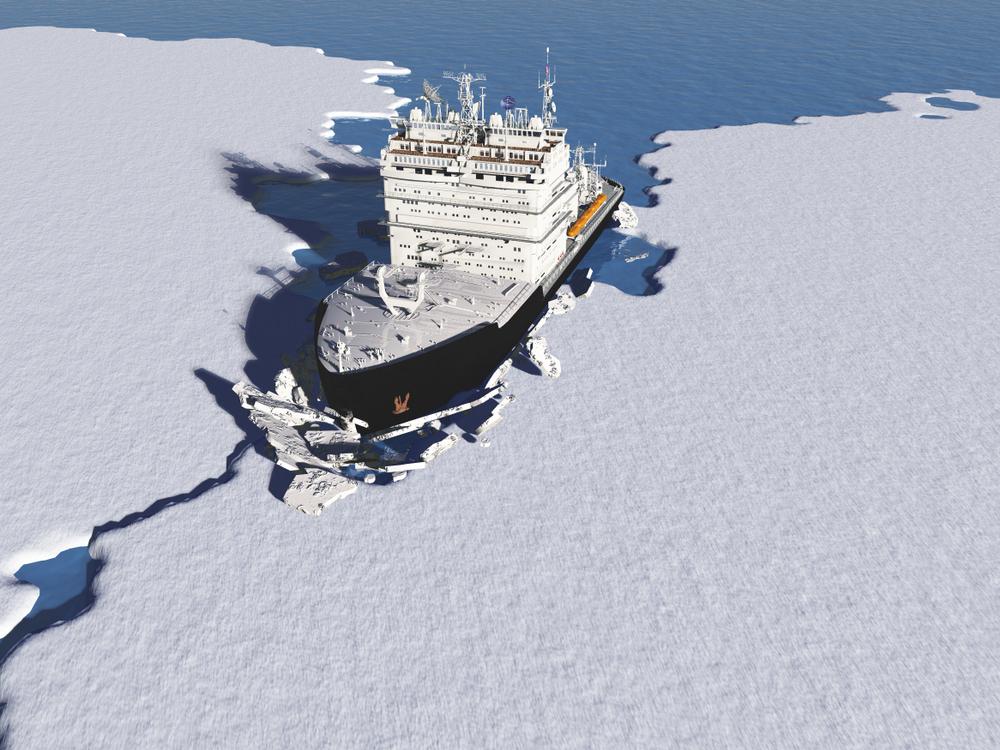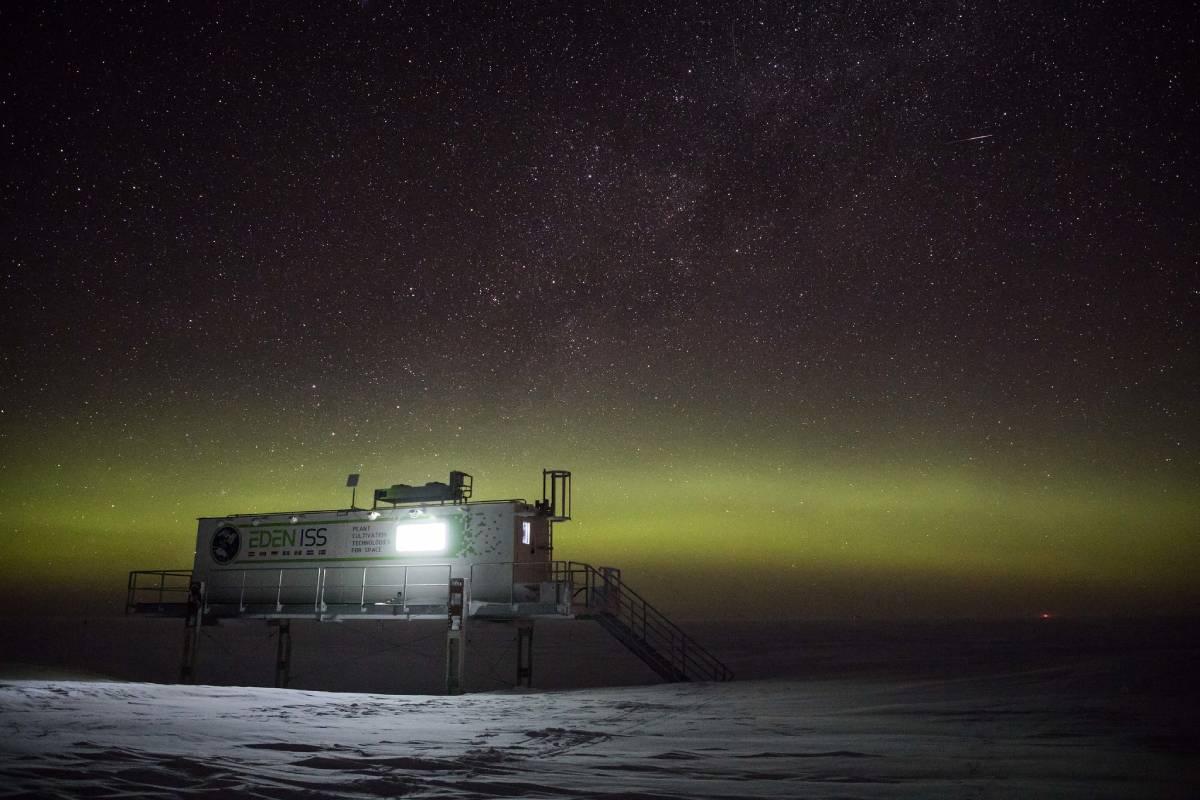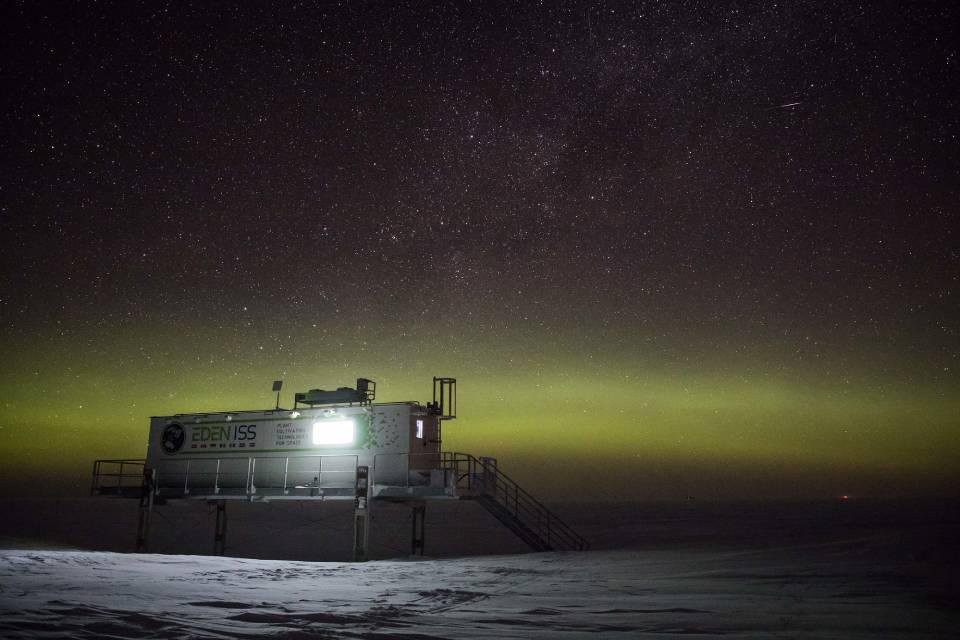Average annual temperature minus 43 °C, relative humidity close to zero, constant winds. Snow and ice are dominant elements in 98% of this land, which is approximately 14 million kilometers wide. There, very few species manage to resist such unfavorable conditions.
Right there at the South Pole on Earth, manned interplanetary travel may be one of the keys to humanity’s survival (with people spending months to years from any basic source of life sustaining).
Because research in the region can reveal information about growing food in places where fresh food production cannot be sustained at first glance.
Such studies began more than a century ago, when ventures into space were nothing more than science fiction. However, with technological evolution and the idealization of steps in extraterrestrial territory – and, who knows, the establishment of colonies in other “neighborhoods” – these efforts began to be directed towards meeting increasingly ambitious needs.
After all, how do the fields in Antarctica help astronauts and what role do they play in planning the exploration of the Universe?
Decades and decades of history
According to University of California historian and assistant professor Daniella McCahey, the first plantation attempts in Antarctica (more than 120 years ago) were aimed at feeding explorers in the area—and in 1902, physicist and botanist Reginald Koettlitz was the first to succeed by action.
Koettlitz grew mustard and watercress in soil samples taken from McMurdo Sound (placed in boxes under a skylight on the expedition ship). Faced with an epidemic of scurvy, the team took advantage of the harvest and depleted it to relieve the symptoms of the condition.
McCahey says Scottish botanist Robert Rudmose-Brown was not so lucky in 1904. None of the seeds of the 22 cold-hardy Arctic plants he brought to Laurie Island germinated, and the scientist attributed the failure to both environmental conditions and the absence of an expert to monitor their development.
Meanwhile, unsuccessful movements to introduce non-native species into such land have not been lacking, as nothing has survived for long. Fortunately, research stations began to appear there in the 1940s, with greenhouses beginning to provide both food and well-being to its inhabitants. Still, it was noticed that the Antarctic soil, besides the watercress and mustard mentioned earlier, did not support much, except that it lost its fertility after a year or two.
Then, in the 1960s, expeditions began to rely on hydroponic methods. These systems are hydroponic and rely on chemically enhanced water (in which the plant roots are immersed) as well as natural and artificial lighting. While the approach involved creating artificial conditions, it was an equally valuable learning experience for the fruits it produced.

Why Antarctica?
In 2015, the world had at least 43 different facilities in Antarctica (where researchers grow plants for various reasons). The impetus for this kind of devotion began with the space race in the 1960s. After all, the hostility of the region is comparable to the situation that astronauts may encounter on journeys beyond Earth, and this allows the development of various protocols that can protect those exploring unknown territories.
That’s why in 2004 the National Science Foundation (USA) and the Center for Controlled Environment Agriculture at the University of Arizona decided to build the South Pole Food Growing Chamber in the area, a project that aims to maximize the cultivation of plants using minimal resources.
The facility mimics conditions on a lunar base and provides “an analogue on Earth for some of the problems that would arise when food production was transferred to space dwellings,” according to its creators. It still operates today, supplying food to Amundsen-Scott South Pole Station.
Other initiatives, such as the EDEN ISS (a greenhouse built in Antarctica), have improved the techniques and achieved unprecedented results. In 2018, EDEN recreated an environment with 65% relative humidity, which keeps the temperature at 21 °C, the environment is exposed to cold below -40 °C. Conclusion? In a 13 square meter area, the scientists harvested 77 kilos of lettuce, 51 kilos of cucumbers, 29 kilos of tomatoes and 12 kilos of turnips, among other vegetables.
On the EDEN ISS, NASA is looking for exactly the answers it needs to improve conditions for those going to the International Space Station (ISS) and for future manned missions to the Moon and the red planet Mars.

From Antarctica to Space
In December 2020, the United States National Aeronautics and Space Administration (NASA) announced that experts would visit the greenhouse on the EDEN ISS to explore the benefits that life support systems like these could provide when replicated.
To give you an idea, the installation produced 268 pounds of fresh food in just nine and a half months – that’s the equivalent of one room in an apartment. Researcher Jess Bunchek headed the expedition.
He and his team would spend months overcoming the challenges posed to agriculture in confined environments. EDEN would test the cultivation of varieties currently used on the ISS, among others, on the ISS.
The team’s discoveries, highlighted by the US agency, will benefit humanity as well as help shape future research on the production of space crops.
Before embarking on the new journey, Jess said: “Preparation is everything. We have to be prepared for any situation.” Certainly, all the knowledge that has accumulated in recent years about the fields in Antarctica has helped both the isolated group in the snow and ice and the astronauts on their tours – and a lot. Fields in Antarctica help astronauts prepare for their next tour.
Source: Tec Mundo
I’m Blaine Morgan, an experienced journalist and writer with over 8 years of experience in the tech industry. My expertise lies in writing about technology news and trends, covering everything from cutting-edge gadgets to emerging software developments. I’ve written for several leading publications including Gadget Onus where I am an author.













